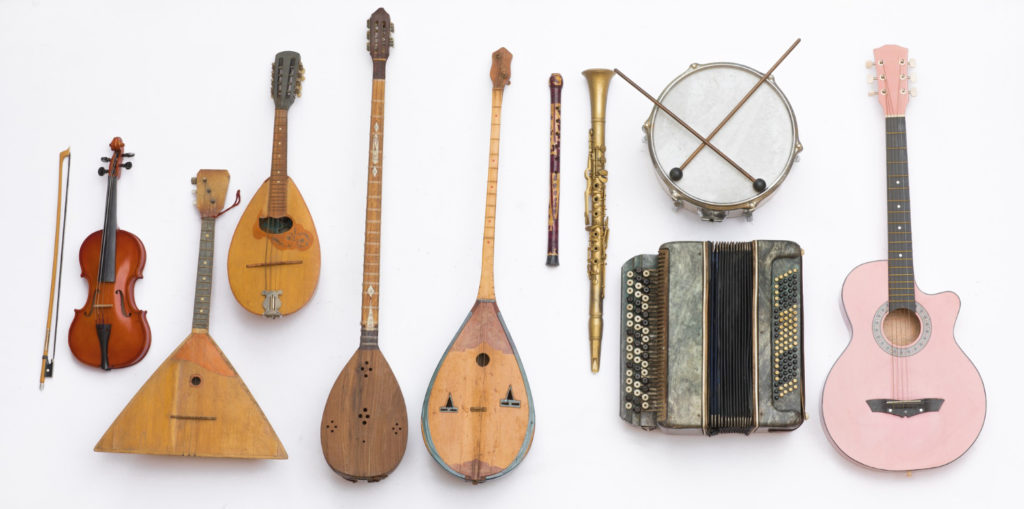
Classification

Patterns by which we holistically structure and arrange our world. That includes our physical, mental, emotional, and spiritual realities.
Story: What is a Dolphin?
A biologist, David, was on a remote archipelago trying to classify the different fish species in the area. As he talked with the locals, Isaac, one of the islanders, began describing a creature he had seen in the waters around the islands.
Isaac: We have big fish swimming in the bay with long snouts and sharp teeth. They are about six feet long. Sometimes they come to the surface to breathe.
David: Wait, did you say they breathe air?
Isaac: Yes!
David: Well, that changes things. It sounds like what you saw was a dolphin.
Isaac: Yes, a dolphin fish!
David: I understand, but dolphins are mammals, not fish. They have lungs instead of gills and give birth to live young instead of laying eggs.
Isaac: I don’t care. They live underwater. They are big fish.
David: I’m not trying to change your beliefs, but from a scientific standpoint, it’s important to accurately classify and understand the different species we encounter. And in this case, what you saw is actually a mammal, not a fish.
Isaac: The categories are simple. There are water animals, land animals like lizards or dogs, and flying animals like doves or bats.
David: You know, dogs and bats are also mammals…
Isaac agreed carefully not to offend the scientist but started to doubt if David was an expert.

Why does it matter?
Whether a dolphin is a fish or a mammal seems irrelevant, but when it comes to faith, distinctions matter!
Is baptism a form of magic or is it a sacrament? Magic tries to manipulate spiritual powers. A sacrament is an act of surrender, an outward sign of God’s grace.
How people understand it shapes what they believe and how they live.
Examples from the Bible
- God created time and space and is therefore outside of time and space (Genesis 1-2).
- The woman at the well asked Jesus about the right place for worship. Jesus replied that it is not a place but a positioning of the heart (John 4:20-23).
- This chapter divides animals into 4 categories: land animals, birds, fish, and insects. Unlike in the scientific definition, a bat is a bird, and a whale is a fish (Leviticus 11).
- The inner room of the Jewish Temple was the Holy of Holies. It was off limits to the people except once a year for the High Priest after a sin offering for himself (Leviticus 16:2).

- Jesus was full of justice and truth. Fair and just (John 1:14).
- Paul refuted those who insisted the Law of Moses must be followed. He declared that as heresy (Galatians 1:6-9). John condemned those who denied Jesus was God come in the flesh (1 John 3). Both are examples dealing with abstract principles.
Real-life examples
- This relates somewhat to language that expresses the realities of our world in mutually understandable terms. In the Chuuk language, for example, the terms hat and roof are the same, and both are in the same category for the people in Micronesia.
- The Chuuk also put a heart and a jellyfish into the same category because both have the same pumping motion.1
- In the Philippines, grocery stores often sort their products by recipe/common dish rather than according to product categories.
- “Which of these four items would you exclude from the cluster as the one that does not belong: axe, hammer, wood, saw? People in print-based learning cultures tend (though not without exceptions) to say that wood does not belong. It’s obvious, right? It’s the only one that is not a tool! People in oral-based learning cultures tend (not without exceptions) to say that the hammer clearly does not belong. It’s obvious, right? Axes and saws are meaningless without wood, so axes, saws, and wood clearly go together. Who ever heard of using a hammer on wood?! How silly.”2
- During traffic accidents in the Philippines and other HOR countries, often the person in the protected expensive car (vs. a cheap motorcycle) must take care of the bills regardless of fault. Fairness and not the justice of the law is applied. Another example is that prices for tourist activities for foreigners can be higher than for Filipinos. It is considered fair because it is assumed that foreigners generally have more money.
- The Kaaba, the Temple in Jerusalem with its courtyards for certain people, a “holy place,” the holiest place, and many local places of power like a tree or rock are such places.
- Space (as one example of what we organize) is generally thought of in 2 dimensions – east/west and north/south. Other cultures tend to recognize an unseen dimension, or Time would be the 3rd dimension if we talk about physics for LOR people. Space may also be thought of in terms of THIS is my/our space or place where we live and work. Others are defined by their space, as we are by OUR space.
Relevance

Preaching in a HOR setting begins with real-life events that eventually move to the truth to embrace and practice. Most HOR cultures tend to think about concrete, real-life experiences in their environment to organize their thoughts and categories. LOR people may prefer to begin with abstract realities and return to real-world realities (when necessary). The later is satisfied to stay in the conceptual realm, and the former requires an immediate connection with real life. Hence, preaching in LOR settings can be satisfying when making conceptual points (love one another).
It relates to the realities of where we understand them concretely. We are tied to our physical environment and understand life through shared experiences. Some things can be seen as spaces – either formally or informally. Some activities must be practiced in certain places, by certain people, for a specific purpose.
What animal is edible? Is a cow, a rat, a dog, a cat, a pig, a horse, etc., edible? Many cultures and religions have a very different view of it. HOR cultures tend to categorize things by their function/application. At the same time, LOR people are more likely to organize the same things differently because they look at their properties. All the animals listed above are edible in some and not edible in other religions.
HOR cultures are usually also emphasizing Honor & Shame over Justice & Guilt. This is tied to their communal identity value and means that fairness plays a more significant role in decision-making than justice. For LOR people Justice for the individual and the written law weighs more than fairness and the greater good for the community.
Orality preference continuum
Application vs. description would describe the two extremes of the spectrum very well.
People from HOR contexts are more likely to emphasize communal fairness and categorize things by function and space by significance.
LOR people, on the other hand, tend to value individual justice more. They classify things by their properties and space by its utilization.
As with all traits of orality, the reality is mostly between these extremes.
| Very high | High | Low | Very low |
|---|---|---|---|
| Everyone knows the boundaries of the physical land and landmarks by which we define OUR space. | We know our space but archive records of the details for protection. | Record or archive the details of our space as the first priority in case another group makes a claim on our space. | The only way to secure our space is through legally archiving that space. |
| When explaining something, always start with an example using physical things from everyday life. No need to state the truth of the matter. Everybody gets it without further clarification. | When explaining something, begin with examples from everyday life, but make sure you state your point before you conclude. | Explain things starting with the truth of the matter and try to illustrate it with something out of everyday living. | When explaining things begin with the point or truth of the matter. |
| Categorize things by their utility or usefulness. | Categorize things by their utility and refer to some classification. | Categorize things in distinct classifications referencing their utility. | Categorize things in distinct classifications, properties, or conceptual distinctions. |
| Fairness for everyone in the community is most significant when making a judgment. | The law must be applied but in a way that is fair to everyone. | There is a little wiggle room when applying the law. | Judgment is purely made based on the written law. |
What has been discovered?
Oral cultures remember information that is familiar to their surroundings and their own life experiences.3
Cognitively processing what comes into our brain can happen in many learned ways that help us learn in our cultural context.4
There may be 2 routes of processing information that make sense to people. One is the “central route” that gives the concepts, principles, or arguments. The Second is the “peripheral route.” At some level, this bypasses the “logical, linear argument” and gives a “gut” reaction. Her story, music, and other art forms take us where intentional processing cannot.5
We learn to organize our thoughts and every other part of our world in a social and cultural framework. The brain simply adapts to what our environment (parents, significant people) train it to do.6
Additional resources
- Discover more about Classification through our training materials at Orality.Academy!
- This an interesting video explaining How Languages See Colours Differently.
- It’s not just about business. The fight over the Dakota Access Pipeline explained.
- Lothar Käser, Animism: A Cognitive Approach, trans. Derek Cheeseman (Nürnberg: VTR Publ, 2014). ↩︎
- D. Jonathan Worthington, “Orality’s Breadth and Depth,” Journal of Global Christianity 8, no. 1 (2023): 8–27. ↩︎
- Ong, Walter. Oraliy and Literacy, 1982, p. 42.
Paredes, O. 2016). Rivers of memory and oceans of difference in the Lumad world of Mindanao. TRaNS: Trans-Regional and-National Studies of Southeast Asia, 4(2), 329-349. ↩︎ - Bouchrika, Imed. What is Information Processing Theory? Stages, Models & Limitation. ↩︎
- Slater, Michael D., and Donna Rouner. “Entertainment—education and elaboration likelihood: Understanding the processing of narrative persuasion.” Communication theory 12, no. 2 (2002): 173-191. ↩︎
- Lev Vygotsky’s Theory of Child Development – Gowrie NSW.
Iranian Perspective: Daneshfar, Samran, and Mehdi Moharami. “Dynamic assessment in Vygotsky’s sociocultural theory: Origins and main concepts.” Journal of Language Teaching and Research 9, no. 3 (2018): 600-607.
An African Perspective: Mkhize, Nhlanhla. “Psychology: An African.” Self, community and psychology (2004).
Asian: Allahyar, Negah, and Dr Ahmad Nazari. “Potentiality of Vygotsky’s sociocultural theory in exploring the role of teacher perceptions, expectations and interaction strategies.” Journal of Working Papers in Language Pedagogy (2012). ↩︎
